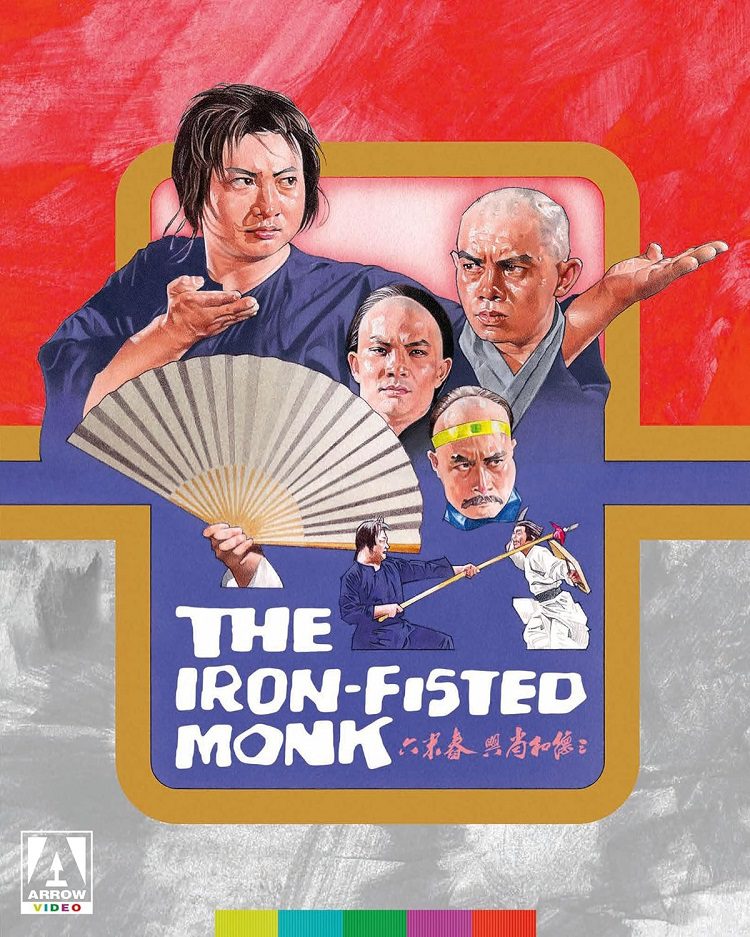
It makes sense that kung fu movies would eventually add in comedic elements. There is an inherent silliness to grown men and women stylistically punching and kicking each other, or fighting with fake-looking swords. The surprising thing is that it took them so long to do it. According to the audio commentary by martial arts cinema expert Frank Djeng The Iron-Fisted Monk (1977) was the first film to add comedy to the kung fu action. A year later Jackie Chan would blend action and comedy into Snake in the Eagle’s Shadow and the rest is history.
First-time director Sammo Hung struggles to blend the two elements (drama and comedy) into a tonally cohesive film. It begins with Hawker (also Hung) training at the Shaolin Temple. The tone immediately becomes playful as Hawker is a prankster. At one point he asks his trainer, the titular Iron-Fisted Monk (Sing Chen), to show him a particular move, and when he does, Hawker moves out of the way so that the Monk accidentally kicks a rival into some water. Jokes abound.
Soon, we learn how Hawker came to the temple. In a flashback, we see a group of Manchus randomly attack his grandfather in his shop, killing him. That’s a pretty dark moment for the character but the film doesn’t dwell on it, nor is it filmed particularly melodramatically. Like similar films, it gives us a tragic backstory only to propel the character into kung fu revenge.
Growing tired of his training, Hawker escapes the temple and returns to his village. Before he arrives, the film cuts to the Manchu gang led by a man only known as the Official (Fung Hark-On), who proceeds to brutally rape a woman who commits suicide shortly thereafter. Unlike the light touch in the scene in which the father is murdered, Sammo Hung allows his camera to linger on the rape. It is a long, brutal scene, one that is completely out of step with the rest of the picture.
In that audio commentary, Frank Djeng notes that this may have been a metaphor-historic raping of China by the Manchu people in the 1600s. I don’t know enough Chinese history to comment on that, but it seems more to me like a first-time director going a little too far with the scene than any type of political commentary.
The woman was the sister of Liang (Lo Hoi-pang), who becomes our secondary hero. Both Liang and Hawker start working for a textile manufacturer whose numbers and economic successes create a rivalry with the Manchu gang. There are a couple of attempts by the Manchus to take over the textile company with little success. Most of the drama within the film is rather dull and not particularly well developed or shot.
What makes the film worth watching is the fight sequences. Hung worked for many years as a stunt coordinator before he took on the role of director and it shows in the action sequences. There are several well-made fights throughout the film but it is the final brawl that is the real draw. Hawker, Liang, and eventually the Iron-Fisted Monk (though sadly his fists are still made of flesh) have a huge fight with the Manchus. Hung’s camera swings in and out of the action allowing us to see the fights on several fronts. The up-close shots demonstrate his amazing ability to coordinate fantastic fights, but he also cuts back into wide shots, letting us see all the fighters moving in and out of the foreground. It really is something to behold.
I just wish the rest of the film was half as interesting.
Arrow Video presents The Iron-Fisted Monk with a new 2K restoration from the original film elements. It includes the original Mandarin audio track plus two English-language ones. Extras include the aforementioned commentary, two archival interviews with Sammo Hung, and one with actor Casanova Wong. It comes with a nice-looking poster and the usual color booklet with an essay on the film.